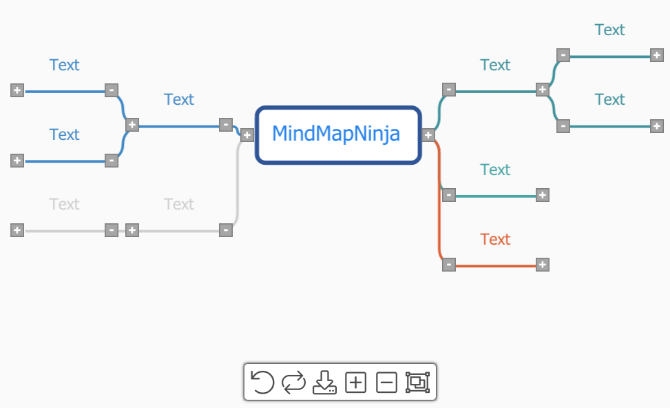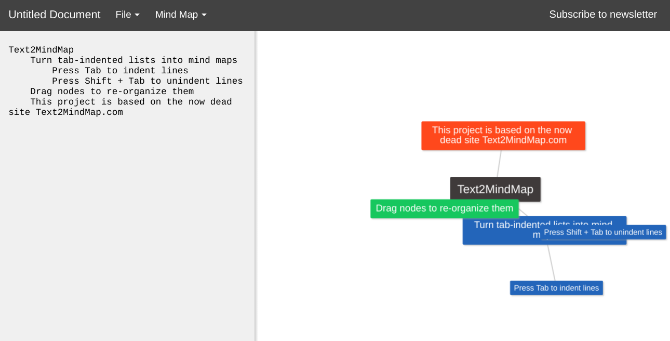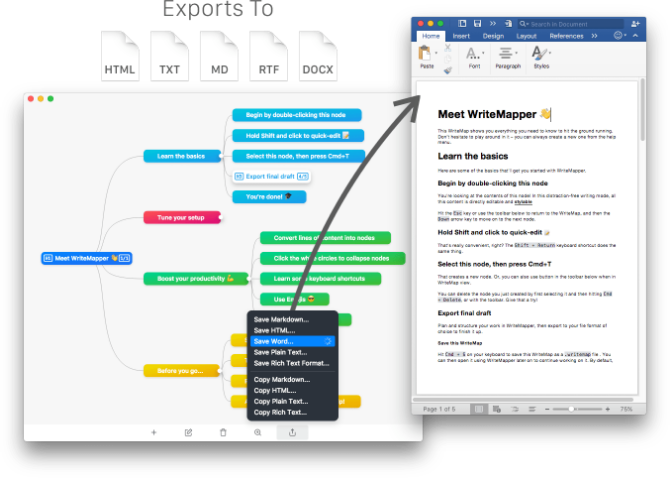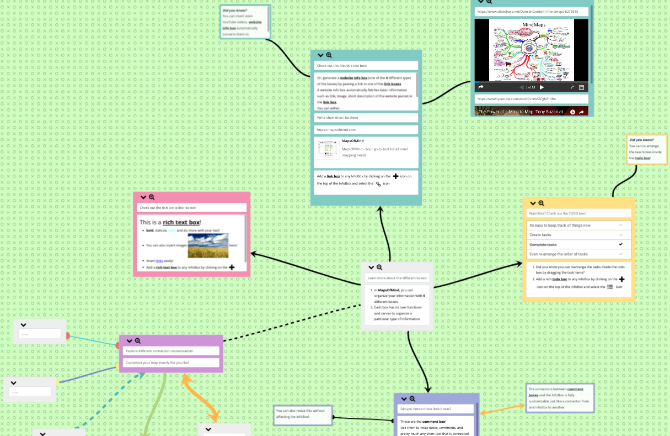
Mind mapping is the practice of organizing ideas during a brainstorming session. It connects all those haphazard thoughts that pop into your head and helps you make sense of them. A pen and paper are often useful, but you can also go digital with apps and sites.
We have previously looked at some of the best mind-mapping tools and how to use them, but as with any popular productivity technique, there are new apps popping up all the time. These new tools cover a range of topics, including apps made for the small mobile screen, beginner mind maps, and even templates.
MindMapNinja (Web)
Tree-based mind-mapping for beginners

If this is your first time with a mind map, I’d suggest starting with MindMapNinja. It’s a free, simple tool that gives you an organized approach to mind-mapping. You don’t even need to register to get started.
Unlike many of the other mind mappers, MindMapNinja doesn’t give you a blank canvas to jot your thoughts down. Instead, it makes you start at a central node, and add more nodes to that. You create a tree-like mind map, expanding thoughts from the central idea, rather than putting all the thoughts into the central idea.
MindMapNinja is a nice way to get started with the mind mapping process. If you have the habit of doing a “mind dump”, this isn’t the app for you. MindMapNinja is more helpful for those who need a platform to build off.
Text2MindMap (Web)
Turn lists into mind maps

Note-taking apps save your thoughts for later. But that leads to a text list, which isn’t always the best way to visualize data for a brainstorming session. Text2MindMap turns such text lists into mind maps automatically.
I used to love a site called Text2MindMap.com, but that’s dead now. This is a replacement that I actually like more. It works just as you might expect, turning text lists into mind maps where each point is a node, and indented lines are sub-nodes. Dragging nodes or sub-nodes will change their position on screen. Changing their text position will change the hierarchy.
Text2MindMap is great for those who usually jot their thoughts in a notepad, but occasionally want to brainstorm with those thoughts.
WriteMapper (Windows, macOS, iOS)
The writer’s mind-mapping tool

I usually avoid paid apps and programs, but WriteMapper was good enough to make an exception. It is an invaluable tool for those who write for a living, whether you’re an author, a scriptwriter, a journalist, or a copywriter.
The app makes you break down your writing task into individual points, each as its own node. Keep generating that nested list as you think of more things. When you’re done, you can rearrange those nodes with simple drag-and-drop. Finally, you can export the entire mind-map as a formatted document in Word, Markdown, HTML, or Rich Text. It’s brilliant to get organized and then start writing.
WriteMapper is a paid software, but play with the free trial version first. You might find it’s actually worth paying for. WriteMapper costs $39.95 for one computer, up to $109.95 for five computers.
Download: WriteMapper for Windows | macOS | iOS ($39.95)
Maps of Mind (Web)
Classic mind mapping on a blank space

Here’s how mind-mapping works offline. You take a blank sheet of paper, a pen, and you start writing ideas anywhere on the paper. Then you circle each one individually and connect them as you see fit. Maps of Mind is the classic example of how this would be done digitally.
You create “infoboxes”, which are similar to nodes. But these infoboxes are more powerful. You can create one infobox with multiple text fields, to-do lists, and even comments. Comments are important since Maps of Mind lets you add collaborators, so you can brainstorm with others. It feels a bit like using Trello for brainstorming, where you can move the boxes around.
Maps of Mind also lets you share the map publicly (or download it) so anyone can see what you’ve done. Here’s a good Maps of Mind example for you to know what you can do with this tool
Mindly (Android, iOS)
A mind mapping app made for phone screens
If you’ve ever used a mind-mapping app on a smartphone, you know this problem. The app only lets you zoom in and out of the whole map. When you zoom out, the nodes are too tiny for any inspiration to strike. It defeats the purpose of mind mapping, if you ask me. Mindly solves that issue for phones.
The Mindly app doesn’t zoom in and out. Instead, it opens each node’s elements when you tap on that node. You never see the sub-nodes beforehand, you only know they exist. I found it a far better way for brainstorming on the go than any of the other mind-mapping apps.
Mindly also has a paid desktop app for macOS, but I wouldn’t bother with it. You are better off downloading one of the best free macOS mind mapping apps instead.
Download: Mindly for Android | iOS (Free)
Build Maps in Other Tools
These apps are great for those who brainstorm regularly. But if your creative thinking needs are few and far between, you don’t need one of these apps. Chances are, you already have some tools you can use for mind mapping.
In fact, Microsoft Office should be enough. We have excellent guides on how to build a mind map in Microsoft Word, or in PowerPoint. And you can download free MS Word templates for mind mapping too.
Read the full article: 5 Mind Mapping Sites and Apps to Brainstorm New Ideas
from MakeUseOf https://ift.tt/2N2Bdsh
via IFTTT
0 comments:
Post a Comment